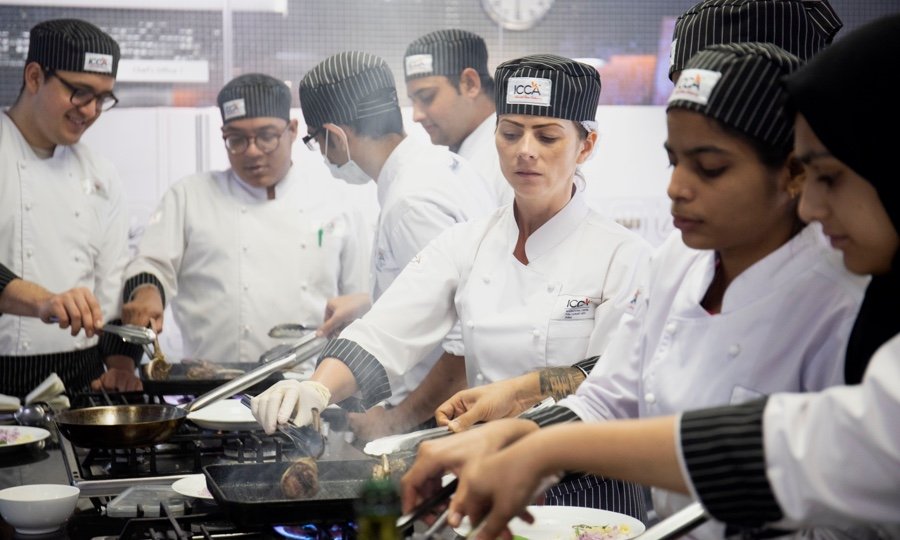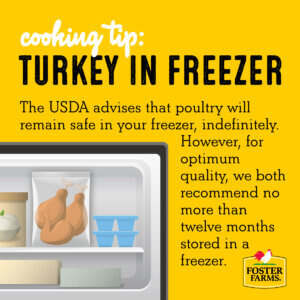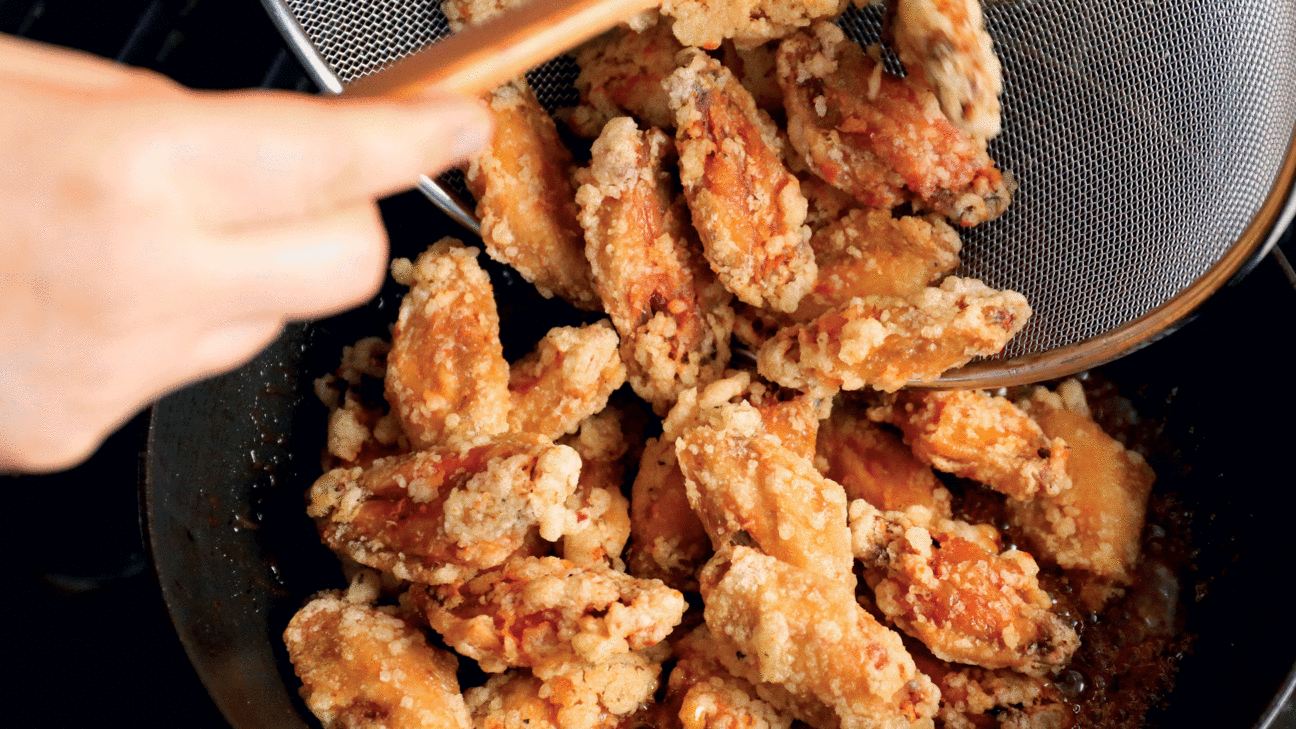
Today, non-stick pans can be coated with a variety of different materials. Each has its pros and cons. Teflon is a popular material because of its high resistance to heat and durability. Teflon can become toxic to food if it is heated too much. We'll be talking about Teflon in this article and discussing the other alternatives. This coating isn't necessary on the best nonstick pans.
PFOA
It is not recommended to use nonstick cookware coated in PFOA and PTFE at high temperatures. These coatings can quickly degrade and become toxic when heated. Nonstick surfaces can also be affected by metal utensils. The coating may become less durable and release chemicals. This article will explain the health hazards and potential consequences of PFOA pans. Here are some tips to help you get a holistic understanding of nonstick pans.
PFOA and other PFAS chemicals like PTFE are persistent in the atmosphere. This means that chemicals from nonstick pans used ten years ago are still present in the environment, groundwater and even our drinking water. Because of these risks, the Environmental Protection Agency (EPA) and the World Health Organization (WHO) have issued a health advisory. These chemicals are "possibly cancer-causing to humans."
PTFE
Nonstick pan coatings made of PTFE are most popular and can prove to be extremely useful when preparing meals for large groups. They protect food from sticking to the bottom of the pans without the use of oil or nonstick sprays. Nonstick pans coated with PTFE are more expensive than regular nonstick ones. Nevertheless, these nonstick pans require some regular care and maintenance. FDA considers nonstick pan coatings made of PTFE safe, however they are not completely harmless. If you want a healthier option, go for ceramic cookware. Cast iron does not contain PTFE so it is safer.

PFAS has been used in cookware for many decades. Many of these chemicals have been found in cookware for decades. "Gen X chemicals" are the newest nonstick pan coating ingredients. The safety of these coatings has been questioned due to the lack of testing. The company behind Greblon's non stick pan coatings also produces several different types of PTFE.
Teflon
A nonstick pan with a Teflon nonstick coating has several disadvantages. The coating's PFOA or polyfluoroalkyl chemicals (PFAS), is the main reason for these problems. While these chemicals have been banned over the years, some cookware still uses it. These hazards can be avoided by avoiding Teflon cookware and looking for nonstick cookware made out of other materials.
Teflon Non Stick Pans contain PFOA. It can cause damage to the environment. It has been linked both to cancer and chronic kidney disease. Additionally, it has been shown to have an adverse effect on the male reproductive systems. When the pan is heated to too high, toxic fumes are released. It should therefore not be used in high-temperature baking. To minimize the risk of exposure to the PFOA, it is best to avoid heating empty Teflon pans in the oven or broiler.
Nanoparticles
Nanoparticles that are novel in nature were created for non stick pan coatings. They are currently being evaluated for their use in food contact applications. The release of nanoparticles from non stick coatings is not fully understood, but recent studies suggest that the particles may leach into food under high temperatures, repeated use and when the surface of the pan becomes damaged. Although this technology is still in its infancy it could be an important addition to nonstick pans.

PTFE is a common substance found in nonstick pans. There are many concerns. The chemical pyrolysis products of heated polytetrafluoroethylene can cause acute toxicosis in budgerigars. However, these products do not harm humans in large quantities and therefore do not pose a health risk to consuming a small amount of PTFE.
FAQ
What is the best career path for someone who wants to be a chef? What are the best ways to start your career as a chef.
If you're interested in becoming a chef, you should consider starting as an apprentice. Apprenticeships let you work for many years and pay no tuition fees. After your apprenticeship is completed, you can apply to be a sous chef. Sous chefs supervise cooks and assist them with tasks like making salads and desserts. They also oversee the entire operation of the restaurant.
Can you become a self-taught chef?
Yes, you can self-teach cooking! The joy of cooking is something that everybody enjoys doing, no matter their skill level. If you're interested in learning how cook at home, then start cooking. Start small with things like making pancakes or spaghetti sauce for your dinner. Experimenting with new recipes is the best way to learn to cook. It is possible to make mistakes.
Cooking can take anywhere from a few hours to several months depending on the skill level. It's important to remember that cooking isn't just about following recipes. There are many ways to cook food. If you have an idea, follow it.
How much does it cost to study Culinary Arts?
It is not easy to find a culinary arts degree that costs less than $40,000. A four-year degree usually costs around $40,000. A two-year associate's level degree can cost less than $5,000. The tuition rate you choose depends on the program. The prices charged by private institutions are generally higher than the public.
Where can I find online cooking classes for free?
Numerous websites offer free cooking lessons. YouTube is a great place to search for cooking videos. You can access thousands of recipes from some websites. Although you will have to pay a monthly fee for these sites, you can always try them for free for 30 consecutive days.
Statistics
- under 10 Kids have been taught that there is special food just for them, and Fiese says that 10 percent of kids will throw a tantrum if they don't get the food they want. (washingtonpost.com)
- You'll be amazed that over 90% of CIA students receive scholarships and grants to finish their culinary studies. (ischoolconnect.com)
- On average, chefs earn $58,740 a year, according to the BLS. - learnhowtobecome.org
External Links
How To
How to make the perfect omelet
Omelets is one of my favourite breakfast foods. But how do you create them perfectly? I have tried many different recipes and methods, but none of them work. Today, I'd like to share some tips with you in order to make delicious and fluffy omelets every day.
We should first know that eggs are very temperamental ingredients when making omelets. You must get them fresh, organically, and keep them cold until you cook. The yolks and whites will not form properly if they aren't kept cold enough. This makes your omelets look weirdly colored. If you want to make omelets right away, it's best not to use eggs that are too cold.
Another tip is to separate your egg before adding it into the pan. You don't want any white to get mixed up with the yolk because this could cause the omelet to curdle.
If you add the egg directly onto the stovetop, you might end up burning the bottom part of the egg, which would ruin the texture of your omelet. Instead, heat the egg in a microwave for 10 seconds and then place it in a pan. The microwave heat is sufficient to cook the egg without overcooking.
Next, let’s talk about mixing the egg. When mixing eggs, it is important to thoroughly beat them. You need to turn the bowl of the mixer upside down. Now shake the bowl vigorously. The egg will be thoroughly mixed in the bowl as the air is whipped.
The fun part begins - you need to pour the milk into your mixture. Pour half the milk into the beaten egg mixture and then fold in the eggs. If you still see streaks of eggs, don't worry. These streaks will disappear once the omelet has been turned over.
After you have folded your eggs, heat up the oil on medium heat. Wait for it to get hot. Once the oil starts getting hot, add 1/4 cup of butter to the pan and swirl it around to coat the entire surface of the pan. Now carefully crack open the lid of the pan and sprinkle salt into the pan. An additional pinch of salt will prevent the omelet form sticking to your pan.
Cover the pan once you have formed the omelet. Wait for the top to set. Flip the omelet with a spatula, or flip it upside down. Cook the other half for another minute. Remove the omelet from the pan and serve immediately.
This recipe is best when used with whole milk. But, you can use skimmed milk as well.